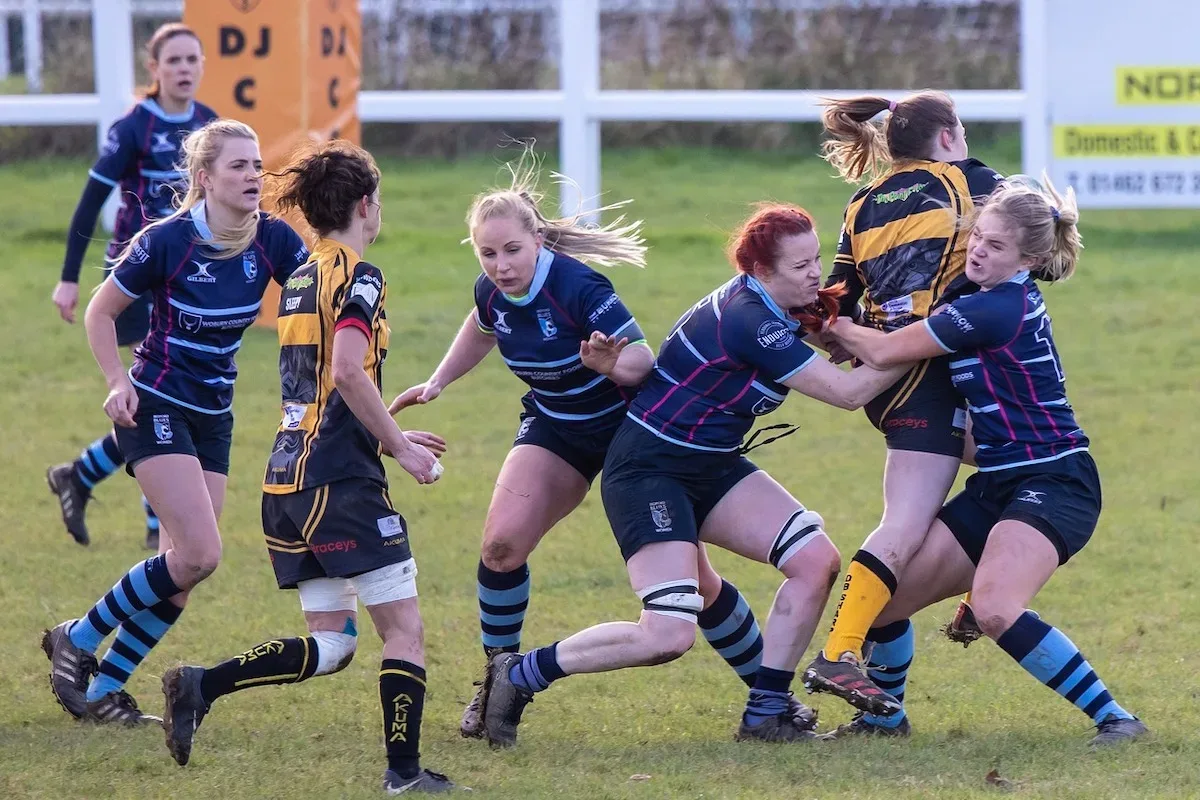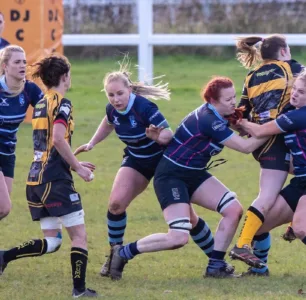Rugby is a sport that requires physical contact, and tackling is an essential part of the game. However, many young rugby players struggle with tackling fear, and as a coach or parent, it can be frustrating to see them back out of tackles. It is crucial to understand why they may be doing this and how to help them overcome their fears. In this article, we will explore the reasons behind why young rugby players back out of tackles and provide tips on how to prepare them for the intensity of tackling.
Reasons behind Young Rugby Players Backing out of Tackles
While the reasons why young rugby players may back out of tackles are similar for both genders, there are some nuances to consider when it comes to young girls.
Fear of injury
Young girls may be more hesitant to tackle due to a fear of injury. They may worry about getting hurt or getting hit in sensitive areas. It is important to address these fears and provide reassurance that proper technique and equipment can help prevent injuries. Coaches and parents should also make sure that girls have access to female-specific protective gear, such as sports bras that provide proper support.
Lack of confidence
Young girls may struggle with confidence when it comes to tackling, especially if they are smaller or less physically developed than their peers. It is important to provide positive feedback and encouragement, as well as match them with players of a similar skill level. Girls-only rugby teams and programs can also provide a supportive environment where girls can build their skills and confidence without feeling intimidated.
Poor technique
Teaching correct tackling technique is crucial for all young rugby players, but it may be especially important for young girls. Girls may have less exposure to contact sports and may need more instruction and practice to develop good technique. Coaches should be patient and willing to break down the basics into smaller parts to help girls master the fundamentals. They should also be careful not to reinforce gender stereotypes about girls being less physical or less capable than boys.
Lack of physical preparation
Young girls may be at a disadvantage when it comes to physical preparation, especially if they are competing against boys or in mixed-gender teams. Girls may have less access to strength training and conditioning programs or may not be encouraged to pursue physical fitness as vigorously as boys. It is important to provide girls with equal opportunities to build their physical fitness and to encourage them to take ownership of their own health and fitness.
Cultural barriers
Finally, young girls may face cultural barriers to participating in rugby or other contact sports. They may be discouraged from playing sports or may face criticism or harassment for not conforming to gender norms. Coaches and parents should be aware of these barriers and work to create an inclusive and welcoming environment for girls. They should also be aware of their own biases and stereotypes and work to challenge them.
Lack of physical preparation
Rugby is a physically demanding sport, and players need to be in good physical condition to play at a high level. If a player is not physically prepared for the intensity of the game, they may back out of tackles because they feel like they cannot keep up.
Tips for Helping Young Rugby Players Overcome Their Fears
- Build confidence
Building confidence is crucial when it comes to tackling fears. Encourage players to practice tackling drills and give them positive feedback when they do it correctly. Also, make sure they are matched with players of a similar skill level, so they do not feel intimidated.
- Teach correct technique
Teaching correct tackling technique is essential to prevent injuries and build confidence. Start with the basics and gradually build up to more advanced techniques. Make sure players are using their arms and shoulders correctly and are keeping their head up when they tackle.
- Focus on fitness
Physical preparation is essential when it comes to rugby. Encourage players to work on their fitness outside of practice by doing cardio and strength training exercises. This will help them feel more prepared for the intensity of the game.
- Create a safe environment
Creating a safe environment is crucial to help players feel comfortable and confident. Ensure that they have access to the right safety equipment, such as mouthguards and headgear. Also, make sure that they know how to use this equipment correctly.
- Break it down
Breaking tackling down into smaller parts can help players feel more comfortable. Start with tackling pads or shields and gradually build up to full contact. This will help players build confidence and develop good technique.
The importance of defensive positioning in tackling
Defensive positioning is a crucial aspect of tackling in rugby. Without proper defensive positioning, players may be more likely to miss tackles or put themselves in a vulnerable position, leading to injuries or missed opportunities. In this section, we will explore the importance of defensive positioning in tackling and how it can improve a player’s performance on the field.
Anticipation
Defensive positioning allows players to anticipate the movements of their opponents and position themselves in the best possible position to make a tackle. By reading the movements of the opposing player and getting into the correct position, a defender can make a tackle more effectively and with greater confidence. This can also help defenders make better decisions about when to commit to a tackle and when to hold back and wait for support.
Better Technique
Defensive positioning is also crucial for improving tackling technique. By being in the right position, players can use the correct technique to make a safe and effective tackle. This includes using the arms and shoulders correctly, keeping the head up, and making contact with the opponent at the right angle. Poor technique can lead to missed tackles, injuries, or penalties, so it is essential to emphasize proper technique in defensive positioning.
Reduce the risk of injury
Proper defensive positioning can help reduce the risk of injury. By positioning themselves correctly, defenders can avoid collisions with the opponent’s knees, elbows, or other body parts that may cause injury. It also allows defenders to stay on their feet and maintain balance, reducing the risk of being knocked over or falling awkwardly.
Maintaining defensive structure
Defensive positioning is also important for maintaining defensive structure. In rugby, defenders must work together to defend the field and prevent the opposing team from making ground. By maintaining a solid defensive line and positioning themselves correctly, defenders can prevent gaps from opening up in the defensive line, making it easier for the opposing team to break through.
Creating opportunities for turnovers
Finally, proper defensive positioning can create opportunities for turnovers. By anticipating the movements of the opposing team and positioning themselves correctly, defenders can intercept passes or strip the ball from the opposing player. This can give the defending team a chance to regain possession and create scoring opportunities.
In conclusion, defensive positioning is a crucial aspect of tackling in rugby. By anticipating the movements of the opposing team, maintaining good technique, reducing the risk of injury, maintaining defensive structure, and creating opportunities for turnovers, players can improve their tackling performance and help their team succeed on the field. Coaches should emphasize the importance of defensive positioning in tackling and provide players with the training and practice they need to master this important skill.
Correct defensive positioning
Correct defensive positioning in rugby involves a combination of several factors, including the player’s stance, body position, and awareness of the opposing player’s movements. In this section, we will discuss the key elements of correct defensive positioning in rugby tackling.
Stance
The player’s stance is a crucial part of defensive positioning. The player should have a balanced stance with feet shoulder-width apart, knees slightly bent, and weight on the balls of the feet. This allows the player to move quickly in any direction and react to the opposing player’s movements.
Body position
The player’s body position is also essential in defensive positioning. The player should be slightly crouched with the head up, eyes focused on the opposing player’s torso, and the arms in front of the body. This position allows the player to stay balanced and react quickly to the opposing player’s movements.
Awareness
Awareness of the opposing player’s movements is crucial for correct defensive positioning. The player should keep their eyes on the opposing player’s torso and anticipate their movements. This allows the player to move quickly to the correct position to make the tackle.
Footwork
Footwork is another essential element of correct defensive positioning. The player should keep their feet moving and be prepared to change direction quickly. This allows the player to maintain a good defensive position and react to the opposing player’s movements.
Timing
Timing is crucial in defensive positioning. The player must time their movements correctly to make the tackle. If the player moves too early, they may miss the tackle or leave a gap in the defensive line. If the player moves too late, the opposing player may have already broken through the defensive line.
Communication
Finally, communication is crucial in defensive positioning. The player should communicate with their teammates and provide information about the opposing player’s movements. This allows the team to work together to maintain a solid defensive line and prevent the opposing team from making ground.
In conclusion, correct defensive positioning in rugby involves a combination of factors, including stance, body position, awareness, footwork, timing, and communication. By mastering these elements, players can improve their tackling performance and help their team succeed on the field. Coaches should emphasize the importance of correct defensive positioning and provide players with the training and practice they need to master this essential skill.

